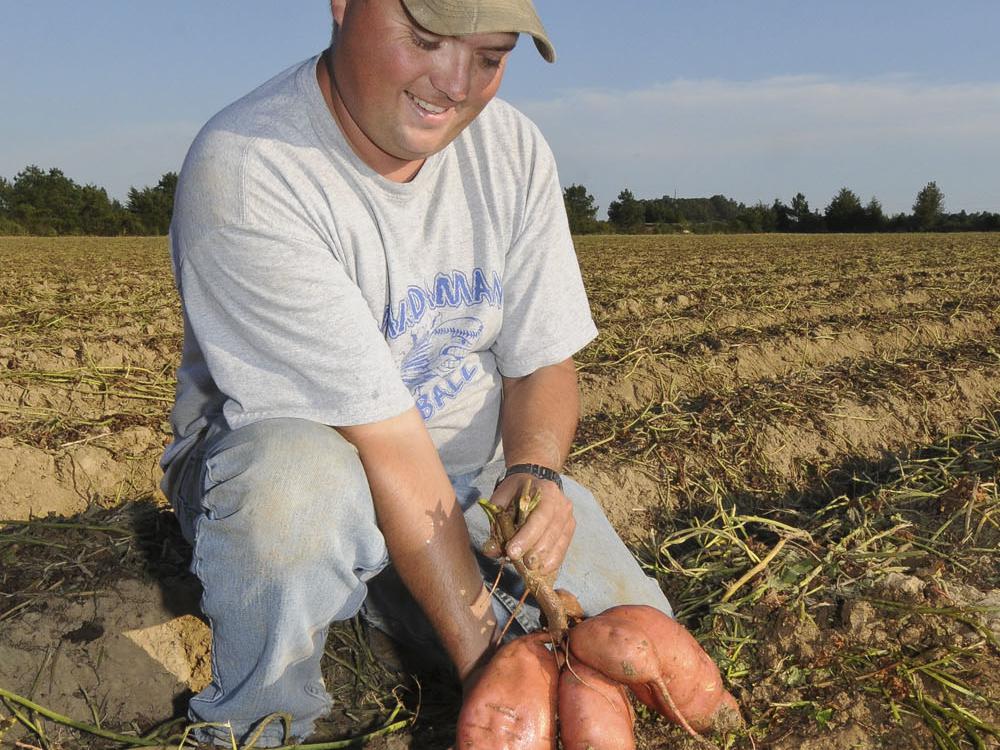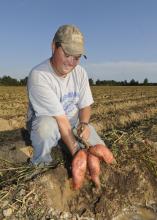Information Possibly Outdated
The information presented on this page was originally released on September 30, 2011. It may not be outdated, but please search our site for more current information. If you plan to quote or reference this information in a publication, please check with the Extension specialist or author before proceeding.
Late rains helped set a good sweet potato crop
MISSISSIPPI STATE – The state’s sweet potato crop appeared to be doomed before it started, but a late soaking allowed this hardy crop to yield average harvests after a tough year.
Bill Burdine, area agronomic specialist in Chickasaw County with the Mississippi State University Extension Service, said quality may be slightly above average for this crop, which started a little behind schedule.
“The first two weeks of June were so dry that we were late getting some fields planted, and others had to be reset because the drought was so bad we lost a lot of plants,” Burdine said. “Although the summer was very dry, Tropical Storm Lee in late August was very beneficial and gave us rainfall when we really needed it.”
The first two to three weeks after a sweet potato plant is set in the ground determine how much it can eventually yield.
“During this time, the plant is setting roots based on current environmental conditions,” Burdine said. “If a plant has good soil moisture, it will set a high number of roots.”
About 50 percent of the yield is made in the last week the roots are in the ground.
“We had a smaller root set on some of our fields, but the potatoes we’re pulling up look good,” Burdine said.
A desirable root is one given a U.S. Department of Agriculture No. 1 grade. To date, growers have been harvesting a lot of medium No. 1 sweet potatoes.
“The No. 1 is the top-money root we’re looking for,” Burdine said. “As of late September, we haven’t harvested a lot of large potatoes, and that is because we didn’t have a lot of rain during the growing season.”
Fields so far are yielding about 130 hundredweights of sweet potatoes per acre, which is slightly lower than yields in recent years.
Growers are finding very little insect damage on the sweet potatoes, although there appears to have been more pressure than usual from reniform nematodes.
“The nematode is a parasite that feeds on the sweet potato roots and stunts the growth of the plant,” Burdine said. “Slower growth means smaller potatoes.”
Harvest is moving a little faster than normal because of ideal soil moisture and rains that haven’t kept workers out of the fields for more than a day. The crop was about 60 percent harvested by the last week of September.
Benny Graves, executive director of the Mississippi Sweet Potato Council in Vardaman, said 23,000 acres of sweet potatoes were planted this year, up 3,000 acres from last year.
Demand is up for sweet potatoes, especially for those being processed for products that range from fries to baby food.
“I’m upbeat about this crop, and I think most farmers feel the same way,” Graves said. “We got some timely rains, and I think our sweet potatoes’ size will trend larger as we get later in the season.”








